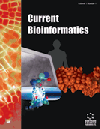
Full text loading...
We use cookies to track usage and preferences.I Understand
With the increasing development of biotechnology, many cancer solutions have been proposed nowadays. In recent years, Neo-peptides-based methods have made significant contributions, with an essential prerequisite of bindings between peptides and HLA molecules. However, the binding is hard to predict, and the accuracy is expected to improve further.
Therefore, we propose the Crossed Feature Correction Network (CFCN) with deep learning method, which can automatically extract and adaptively learn the discriminative features in HLA-peptide binding, in order to make more accurate predictions on HLA-peptide binding tasks. With the fancy structure of encoding and feature extracting process for peptides, as well as the feature fusion process between fine-grained and coarse-grained level, it shows many advantages on given tasks.
The experiment illustrates that CFCN achieves better performances overall, compared with other fancy models in many aspects.
In addition, we also consider to use multi-view learning methods for the feature fusion process, in order to find out further relations among binding features. Eventually, we encapsulate our model as a useful tool for further research on binding tasks.

Article metrics loading...

Full text loading...
References


Data & Media loading...

